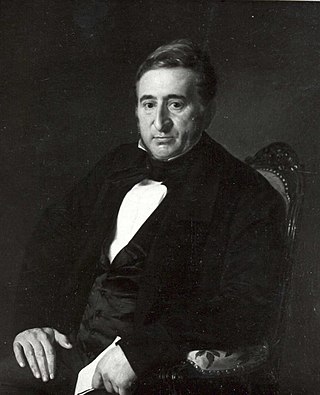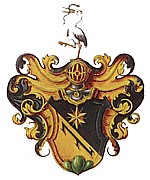Johann Philipp Abelin was a German chronicler whose career straddled the 16th and 17th centuries. He was born, probably, at Strasbourg, and died there between 1634 and 1637. He wrote numerous histories under the pseudonyms of Abeleus, Philipp Arlanibäus, Johann Ludwig Gottfried and Gotofredus.

Theodor Zwinger the Elder was a Swiss physician and Renaissance humanist scholar. He made significant contributions to the emerging genres of reference and travel literature. He was the first distinguished representative of a prominent Basel academic family.

Matthäus Merian der Ältere was a Swiss-born engraver who worked in Frankfurt for most of his career, where he also ran a publishing house. He was a member of the patrician Basel Merian family.

Maria Sibylla Merian was a German entomologist, naturalist and scientific illustrator. She was one of the earliest European naturalists to document observations about insects directly. Merian was a descendant of the Frankfurt branch of the Swiss Merian family.

The Burckhardt family alternatively also (de) Bourcard is a family of the Basel patriciate, descended from Christoph (Stoffel) Burckhardt (1490–1578), a merchant in cloth and silk originally from Münstertal, Black Forest, who received Basel citizenship in 1523, and became a member of the Grand Council of Basel-Stadt in 1553.
Petrus Ryff was a Swiss mathematician, physician and chronicler from Basel.

Christoph Merian was a banker and businessman. He was the owner of a large estate, agriculturist and rentier. He was one of the richest Swiss men of that time. He was an honorary citizen of Münchenstein (1854) and the canton of Basel-Country (1855) and the founder of the Christoph Merian Stiftung.

Jacob Marrel was a German still life painter active in Utrecht during the Dutch Golden Age.
Jan van Bunnik (1654–1727) was a Dutch Golden Age landscape painter.

Johann Christoph Rincklake was a German portrait painter of the Romantic era, with a high standing in international art history.

Johann Ulrich Kraus was an early German illustrator, engraver and publisher in Augsburg.
The Calendarium Naturale Magicum Perpetuum is a late renaissance (c.1619-1620) grimoire and esoteric print of calendar engravings. Its full title is Magnum Grimorium sive Calendarium Naturale Magicum Perpetuum Profundissimam Rerum Secretissimarum Contemplationem Totiusque Philosophiae Cognitionem Complectens. It is in three sheets, measuring more than four feet long and about two feet wide, and includes an early example of a Pentagrammaton.

Matthäus Merian was a Swiss engraver and portrait painter.

The Seyler family is a Swiss family, originally a patrician family from Liestal near Basel. Family members served as councillors and Schultheißen of Liestal from the 15th century, later also as members of the Grand Council of Basel. A Hamburg branch descended from the banker and renowned theatre director Abel Seyler became by marriage a part of the Berenberg banking dynasty, co-owners of Berenberg Bank and part of Hamburg's ruling class of Hanseaten.
Dorothea Maria Graff (1678–1743) was an 18th-century painter from Germany, who lived and worked in Amsterdam, and Saint Petersburg.

Rudolf Geigy was a Swiss biologist and a professor of embryology and genetics at the University of Basel. He established the Swiss Tropical and Public Health Institute and studied tropical diseases.

Louise van Panhuys née von Barckhaus of Wiesenhütten was a German botanical artist and landscape painter.

The Church of St Peter is a former evangelical church located in the Innenstadt area of Frankfurt, Germany. It has been known as jugend-kultur-kirche sankt peter since 2007, when it became a youth centre.
















